| Content | Rupert Neve Designs R6 500 Series chassis is a 6-space, steel rack enclosure that sports XLR, TRS, and DB-25 I/O to work with any studio setup. To ensure your modules are properly powered, the R6 has 150% of the required current, so you'll never be underpowered. It also has a built-in LED display to show current consumption and a double-shielded internal power supply that won't add any interference or unwanted noise to your signal. Rupert Neve is an audio legend. So you know when he designs a 500 Series chassis, it's top-shelf, all the way. Give your 500 Series modules the pampering they deserve with the Rupert Neve Designs R6 500 Series rack.
Genius in the details
With the Rupert Neve Designs' RND R6, there's genius in the details. The R6's double-shielded internal power supply was meticulously designed to avoid magnetic induction in any of its module slots. The power supply is a Switchmode type, and great care was taken to ensure that the frequencies are considerably outside the audible band. There's an internal jumper configuration that makes it easy to link slots in pairs. It's even fitted with variable-position screw holes that slide to accommodate modules that are slightly out-of-spec, which makes the insertion of modules quick and easy. Trust Sweetwater: when it comes to 500 Series racks, the RND R6 is as good as it gets.
Rupert Neve Designs RND R6 500 Series Rack Features at a Glance:
- Supplies 150% of the required current
- LED current consumption meter displays available current
- XLR, TRS, and DB-25 I/O
- Variable-position screw holes make for quick and easy module insertion
- Double-shielded internal power supply designed to avoid magnetic induction in module slots
- Switchmode PSU with frequencies considerably outside audible band
- Internal jumper configuration lets you link slots in pairs
| In addition to the 100% analog tape emulation circuitry – great for bringing out 3rd-order harmonics – the 542 incorporates a soft-clip circuit that tames the harshest sources and enhances 2nd-order harmonics, variable Silk Red & Blue for an infinite variety of transformer tones, and a blend control to dial in in the perfect amount of saturation.
Transformers Imitating Tape
Unlike digital emulations, the “True Tape” drive circuit works by feeding a custom-designed interstage transformer acting as a “record head”, which in turn is coupled to a correctly-equalized replay amplifier. As the voltage rises on the “record head”, saturation increases, and a soft clip circuit engages at higher levels to round off peak transients. The sound of the tape circuit can be further modified with selectable 15 / 30 IPS modes and a pre/post-tape blend control.
What is Silk?
In addition to the tape circuit, the continuously variable Texture control with Silk Red and Silk Blue modes provides a whole other level of control over the harmonic density and tonality of your tracks & mixes. The Silk Red mode accentuates transformer saturation in the high and high-mid frequencies to amplify the vibrant midrange harmonics associated with Rupert’s vintage equipment, while Silk Blue accentuates saturation of the lows and low-mids to add thickness and weight to any source – especially useful for “thin-sounding” tracks or mixes. Unlike EQ, these Silk & Texture controls saturate the output transformers, and add highly musical harmonics to the source material according to the amount of Texture applied.
Drive the 542 hard, choose your Silk flavor, and crank the Texture knob for a rich, saturated, vintage vibe – or disengage Silk entirely for a more purist, hi-fi tape effect. The choice is yours.
LINE AMP NOISE
- Measurements with tape circuit disengaged. Measured at Main Output, un-weighted, 20 Hz - 22 kHz, Input Terminated 40 Ohm.
- Unity Gain: Better than -100 dBV
FREQUENCY RESPONSE
- Measured at +10 dBu, trim at unity.
- Main Output: +/- 0.25 dB from 5 Hz to 60 kHz, -2 dB @ 120 kHz
MAXIMUM OUTPUT LEVEL
23.25 dBu
TOTAL HARMONIC DISTORTION AND NOISE
- @ 1 kHz, +20 dBu output level: Better than 0.002%
- @ 20 Hz, +20 dBu output level: 0.07% Typical (2nd and 3rd harmonic)
TAPE FX SPECIFICATIONS
NOISE
- Measured at Main Output, un-weighted, 20 Hz - 22 kHz, Input Terminated 40 Ohm.
- Saturation @ minimum: Better than -100 dBu
- Saturation @ maximum: Better than -100 dBu
FREQUENCY RESPONSE
- 15 IPS, Input @ -0 dBu: -3 dBu @ 28 kHz
- Saturation @ minimum: 0 dBu @ 10 Hz
- +5 dBu Peak @ 60 Hz Saturation @ maximum: -3 dBu @ 20 kHz
- -3 dBu @ 12.5 Hz
- +2.4 dBu Peak @ 60 Hz
- 30 IPS, Input @ -0 dBu: -3 dBu @ 120 kHz
- Saturation @ minimum: -3 dBu @ 10 Hz, +3.15 dBu Peak @ 125 Hz
- Saturation @ maximum: -3 dBu @ 100 kHz
- -3 dBu @ 12.5 Hz
- +1.3 dBu Peak @ 110 Hz
TOTAL HARMONIC DISTORTION AND NOISE
15 IPS
- Input @ -0 dBu: 0.4% @ 3 kHz to 1% @ 175 Hz typical Saturation @ minimum: Greater than 1% below 175 Hz typical
- Saturation @ maximum: 1% at 6 kHz typical, 0.3% @ 1 kHz to 3% @ 50 Hz typical
30 IPS
- Input @ -0 dBu: 1% at 1 kHz typical
- Saturation @ minimum: 0.6% @ 400 Hz to 5% @ 20 Hz typical
- Saturation @ maximum: 1.5% @ 20 kHz to 0.4% @ 1 kHz typical, 0.4% @ 1 kHz to 2% @ 50 Hz typical
POWER REQUIREMENTS
Supplied by 500 series rack with 110-125 mA @ +/- 16V DC | Firmly rooted in six decades of console design experience, the 5057 Orbit gives your mixes the legendary tonality, power, and wide-open soundstage that only Rupert Neve’s class-A analog summing can provide. Coupled with Rupert’s famous custom audio transformers and Silk Red & Blue circuitry for variable harmonic saturation, the Orbit launches sterile in-the-box mixes to new heights of tone, depth and clarity – without compromising the recallable convenience and repeatability of your DAW-based workflow.
When you push a mix buss and output transformers towards saturation, the non-linear, musical harmonics that occur are what truly glue a recording together and bring it to life.
Rather than using an external summing solution that offers little more than an ultra-clean representation of the in-the-box experience, the Orbit provides the extraordinary richness, harmonic complexity and depth that only a Rupert Neve console can bring to your mixes.
The Orbit utilizes a highly custom output transformer configuration originally developed for the acclaimed Shelford Channel, which provides both a Main Output and a -6dB Output – the latter of which enables you to fully drive the Orbit to achieve more transformer harmonics without clipping the next device in the chain. This unique transformer drive is a hallmark of the sound of Rupert Neve throughout the years – and the sound of countless classic hit records.
Classic Sounds on Demand
Every mix demands its own treatment. In addition to the choice of outputs, the continuously variable Texture control with Silk Red and Silk Blue modes gives you complete control over the harmonic density and tonality of your mix – or lets you keep it utterly pristine and uncolored.
The Silk Red mode accentuates transformer saturation in the high and high-mid frequencies to amplify the vibrant midrange harmonics associated with Rupert’s vintage equipment, while Silk Blue accentuates saturation of the lows and low-mids to add thickness and weight to any source – especially useful for “thin-sounding” mixes. Unlike EQ, these Silk & Texture controls saturate the output transformers, and add highly musical harmonics to the source material according to the amount of Texture applied.
Drive the mix buss hard, choose your Silk flavor, and crank the Texture knob for a rich, saturated, vintage vibe – or disengage Silk entirely for clear, wide-open sonic beauty. The choice is yours.
Build your Dream
While the Orbit is an extremely effective tool on its own, multiple units can be combined through the Buss Link for a higher channel count. The 5057 Orbit can also be used as a building block in an expandable summing system utilizing the 5059 Satellite for flexible summing & routing, and the 5060 Centerpiece for additional mixing and monitoring features.
These units create the core of a world-class analog modular console system rivaling any traditional large-scale studio setup.
Channel Separation and Accuracy
With precisely fixed channel levels and accurate mix buss attenuation via high-quality stepped switching, the Orbit’s purist signal path has vanishingly low crosstalk, and channels matched to within +/-0.1dB. This provides your mixes with the widest and most accurate stereo image, the greatest depth, and the most direct signal path, allowing you to hear every single detail of your mixes.
DAW Based Recall without Compromise
Frequent recalls can be a challenge for modern mix engineers. The Orbit’s elegant simplicity and fixed level accuracy provides rapid, repeatable DAW-based recall from mix to mix, while adding the rich, unrivaled sound quality of Mr. Neve’s class-A transformer-coupled mix buss.
INPUT IMPEDANCE
16K Ohm
FREQUENCY RESPONSE
- 10 Hz to 50 kHz: +/- 0.1 dB
- 150 kHz: -3 dB
NOISE
- From 22 Hz - 22 kHz.
- -90 dBu typical
MAXIMUM INPUT LEVEL
@ 1 kHz: +26 dBu
MAXIMUM OUTPUT LEVEL
@ 1 kHz: +26 dBu
THD+N%
- From 22 Hz - 22 kHz.
- 0 dBu @ 1 kHz: 0.003%
- +20 dBu @ 1 kHz: 0.0006%
CROSSTALK
- 1 kHz: -103 dBu
- 10 kHz: -93 dBu
PRODUCT DIMENSIONS
19” W (48.3 cm) x 9” D (22.9 cm) x 1.75” H (4.4 cm)
SHIPPING DIMENSIONS
24” L (61 cm) x 13” W (33 cm) x 4” H (10.2 cm)
SHIPPING WEIGHT
10 lbs (4.5 kg) | Packed with ultra-fast, rock-solid performance, the Behringer S32 32-channel digital snake system bridges the gap between your band, your FOH engineer, and your audience. With the S32, you get 32 remote-controllable Midas-designed preamps and 16 analog, servo-balanced XLR returns at the stage end, and it's all piped through a single, convenient Cat 5e cable, thanks to integrated SuperMac technology from Klark Teknik. In other words: no more bulky analog snake! So step up to the digital age — order your Behringer S32 32-channel digital snake system from Sweetwater today!
AES50 networking capability provides compatibility with many digital mixers
When Behringer first developed their S32 digital snake system, they intended it to go hand-in-hand with their powerful X32 digital mixing system. But limiting such a convenient and affordable digital snake to the X32 alone would have been a shame, which is why Behringer designed it around the strict guidelines established by Klark Teknik. The result is an affordable digital snake that's completely compatible with any digital console that sports an AES50 digital Ethernet connection. So if you're running a Midas or Behringer digital mixing board, if it's got an AES50 Ethernet port on it, if you've got an S32 digital snake, you're never more than a single connection away from your stage box.
Remote-controllable preamps make setup fast, easy, and painless
Even if you try to get a jog in every day, no one likes having to run up to the stage every time you have to make an adjustment to your stage box. Thanks to the Behringer S32 digital snake system's remote-controllable preamp design, those back-and-forth cross-venue dashes are a thing of the past. Using the Klark Teknik SuperMAC protocol, your S32 will show up in your digital mixer's OS, giving you the control you need over your pres, right from the front of house position. And by the way, these preamps are the exact same high-quality Midas-designed preamps found in the X32 console, so you know you're getting quality sound with low noise and tons of headroom.
Total integration with Behringer's P-16 personal monitoring system
Streamlined, affordable, and super-easy-to-use, everyone's raving about Behringer's Powerplay P16 personal monitoring systems. When you add a Behringer S32 digital snake system to your PA rig, you're not just getting a great set of remote-controllable preamps and ditching tons of bulky cable, you're ready to add an advanced personal monitoring system directly inline with the rig you already have. That's because your S32 digital snake comes equipped with Ultranet connectivity, which provides your Powerplay P16-M monitor controllers with a digital split straight from the stage box.
Behringer S32 32-channel Digital Snake System Features:
- Simple, flexible, and affordable digital snake system that works with any AES50 network-ready digital console
- 32 x fully programmable and remote-controllable Midas-designed mic preamps give you exceptional sound, right from the stage
- 16 x analog, servo-balanced XLR outputs let you send complete monitor mixes to the stage
- AES50 network ports featuring Klark Teknik SuperMac technology, providing you with ultra-low latency digital audio that's in-ear compatible
- Up to 328' of networking capability via a single lightweight CAT-5e cable (not included)
- Dual AES50 ports let you cascade multiple S32 units, without a merger or a router
- Precise LED metering plus 7-segment displays let you keep a close eye on your levels
- Ultranet connectivity for Behringer's Powerplay P16 Personal Monitoring System is perfect for In-ear applications
- Dual ADAT outputs for use in splitter mode and stand-alone digital multicore applications
- MIDI In/Out for bi-directional communication between FOH console and on-stage MIDI devices
- USB connector for system updates via PC
- Planet Earth switching power supply for maximum flexibility, noise-free audio, superior transient response plus low power consumption for energy saving
- Durable yet compact, all-steel 3U rack-mount chassis provides flexible mounting
| Comprised of a rugged, portable chassis with world-class preamp, compressor and DI circuits as well as two channel operation, Vari-phase, Silk and DI/mic blending capabilities, the Portico 5017 is an innovative and powerful tool for recording or live performance.
FREQUENCY RESPONSE
- Main Output, no load.
- -0.2 dB @ 10 Hz
- -3 dB @ 160 kHz
NOISE
- Measured at Main Output, unweighted, 22 Hz - 22 kHz. Terminated 150 Ohm.
- With gain at unity better than -100 dBu
- With gain at 66 dB better than -62 dBu
- Equivalent Input Noise better than -128 dBu
NOISE FACTOR
1.5 dB
HIGH PASS FILTER
80 Hz, 12 dB/Octave Bessel
MAXIMUM OUTPUT LEVEL
Maximum output from 20 Hz to 40 kHz is +23 dBu
TOTAL HARMONIC DISTORTION AND NOISE
- @ 1 kHz, +20 dBu output: Main Output: Better than 0.001%
- @ 20 Hz, +20 dBu output: Main Output: Better than 0.002%
SILK ENGAGED
Better than 0.2% Second harmonic
COMPRESSOR
THRESHOLD
Continuously Variable from -20 dBu to +10 dBu
RATIO
Fixed at 2:1
ATTACK & RELEASE
- FAST MODE: Attack 40ms , Release 40ms
- SLOW MODE: Attack 100ms , Release 350ms
PHANTOM POWER
+48 Volts DC +/- 1%
POWER REQUIREMENTS
12VDC is optimal voltage, but 9-15VDC is acceptable
CURRENT CONSUMPTION
- @ 9VDC Current is 1.3 A typical: Power = 11.7W
- @ 12VDC Current is 1.0 A typical: Power = 12.0 watts
- @ 15VDC Current is 800 mA typical: Power = 12.0 watts
DIMENSIONS
7.5″ (deep) x 6.5″ (wide) x 2″ (high) | Discover the PM7000N, the first Marantz fully discrete, current feedback integrated Hi-Fi amplifier with HEOS Built-in technology. The ideal choice for audiophiles that require Marantz musical sound and music streaming, the PM700N includes high-grade audio components, current feedback HDAMs, a toroidal transformer, and a high-speed instantaneous current power supply. The versatile PM7000N features multiple analog and digital inputs, and decodes digital audio files ALAC, FLAC and WAV lossless files up to 24-bit/192-kHz — plus, DSD 2.8MHz and 5.6MHz tracks for high-resolution listening. Stream your favorite music wirelessly, and control the amplifier with leading voice agents Apple Siri, Google Assistant, and Amazon Alexa.
Features
- Power to suit your audio preference: 2ch fully discrete current feedback integrated Hi-Fi amplifier; 60W per channel (8-ohm, 20Hz – 20kHz)
- Wide range of connectivity:
- Four analog inputs, one analog output, one coaxial input, two optical digital inputs and one USB-A for high-resolution audio files
- Marantz proprietary HDAM-SA3 circuit: Wider dynamic range with lower distortion for the output stage
- Flexibility for all configurations: Tone control to tune sound to your exact specifications and dedicated subwoofer output for evenly dispersed bass, no audible peaks or dips
- Newly designed electric volume circuit: Use the latest volume control IC to realize better channel separation, dynamic range, and distortion-reduction
- Play vinyl with exceptional clarity: Integrated phono input with newly designed FET input stage to improve signal purity and sound
- Premium Marantz SPKT-1+ speaker terminals: Improved connection to speakers
- Stream music from your favorite sources: Play songs from TuneIn, Internet Radio, Pandora, Spotify, SiriusXM, Amazon Prime Music, TIDAL and more via AirPlay 2, Bluetooth and the HEOS app (music streaming services may vary by region)
- Speak your commands: Supports Amazon Alexa, Google Assistant and Apple Siri voice agents for seamless voice control
- High-performance, high-resolution audio playback: Ability to decode high-resolution audio ALAC, FLAC and WAV lossless files up to 24-bit/192-kHz — plus, DSD 2.8MHz and 5.6MHz tracks for high-resolution listening
- Built-in Bluetooth and Wi-Fi with 2.4GHz/5GHz dual band support: Improved network stability even in Wi-Fi crowded homes
- Works with your TV remote: Program the PM7000N to work with your TV remote and easily adjust volume up, volume down, mute and source selection
Specifications
Inputs: RCA line x 3, RCA MM phono x 1, digital coax x 1, optical x 2, USB A x 1, Ethernet
Phono input sensitivity: 2 mV @ 47 kOhm
Phono SNR: 87 dB
Outputs: Tape out, subwoofer out, headphone out, speaker A and B
Power output (8 ohm / 4 ohm): 60 W / 80 W
Damping factor: 100 and over
Dimensions: 17.3" x 14.9" x 4.9"
Weight: 23.8 lb
|


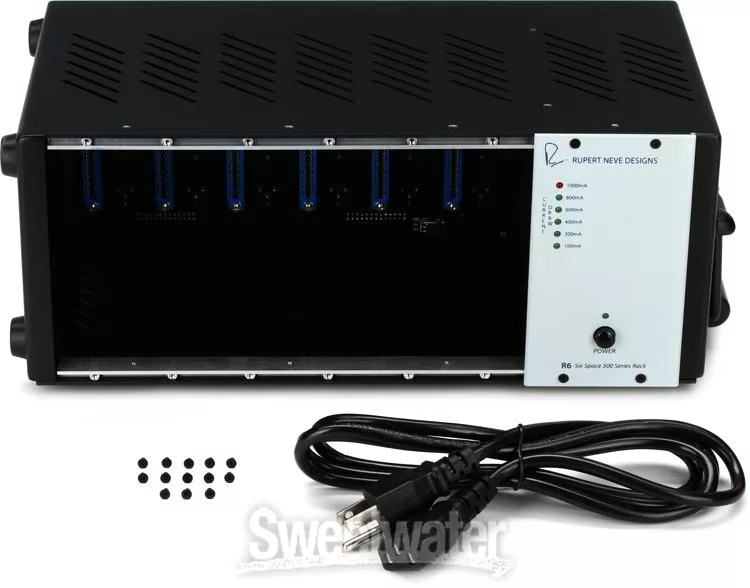
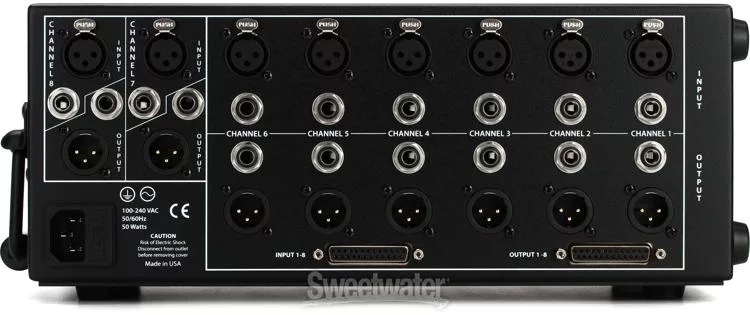

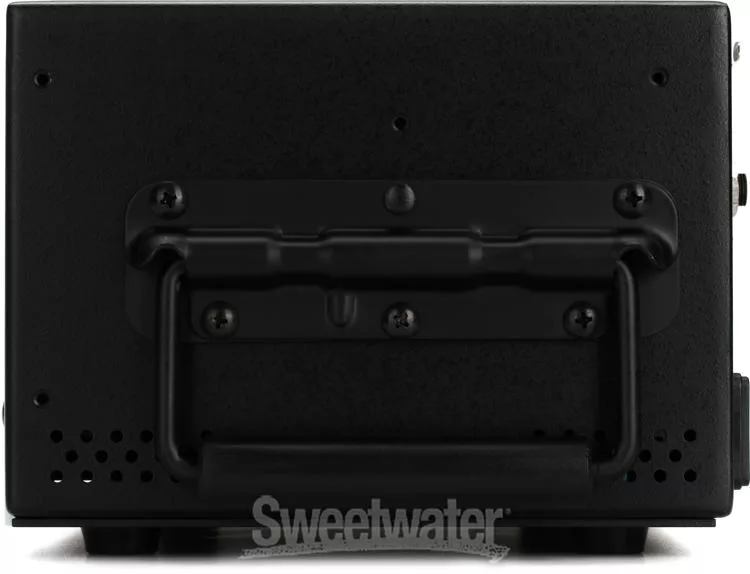







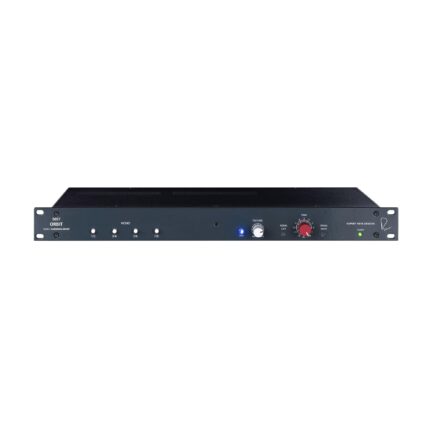

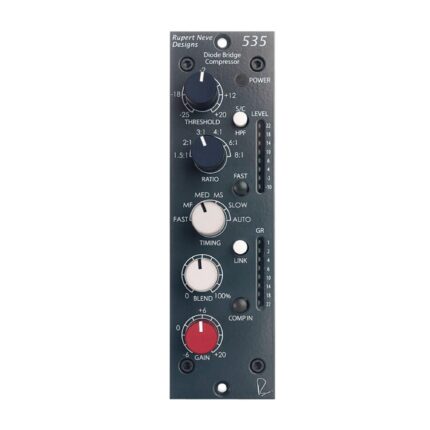





Reviews
There are no reviews yet.